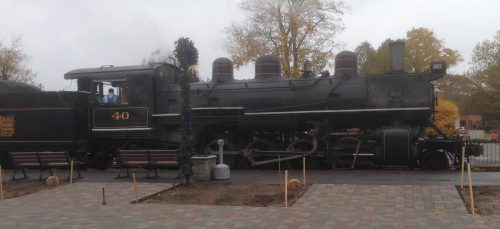John McCain Was elected to Congress in 1982 and elected to the Senate in 1986 taking the seat previously held by Barry Goldwater. In 1989, he was involved in the “Keating Five Scandal.
The five senators—Alan Cranston (Democrat of California), Dennis DeConcini (Democrat of Arizona), John Glenn (Democrat of Ohio), John McCain (Republican of Arizona), and Donald W. Riegle, Jr. (Democrat of Michigan)—were accused of improperly intervening in 1987 on behalf of Charles H. Keating, Jr., Chairman of the Lincoln Savings and Loan Association, which was the target of a regulatory investigation by the Federal Home Loan Bank Board (FHLBB). The FHLBB subsequently backed off taking action against Lincoln.
The late 1980s were the era of the Savings and Loan scandals.
The Federal Home Loan Bank Act of 1932 created the S&L system to promote homeownership for the working class. The S&Ls paid lower-than-average interest rates on deposits. In return, they offered lower-than-average mortgage rates. S&Ls couldn’t lend money for commercial real estate, business expansion, or education. They didn’t even provide checking accounts.
In 1934, Congress created the FSLIC to insure the S&L deposits. It provided the same protection that the Federal Deposit Insurance Corporation does for commercial banks. By 1980, the FSLIC insured 4,000 S&Ls with total assets of $604 billion. State-sponsored insurance programs insured 590 S&Ls with assets of $12.2 billion.
Inflation in the late 1970s and early 1980s led to pressure on Savings and Loan institutions that had been lending money at 6% to home buyers but savers were demanding higher interest rates to compensate for inflation. The S&Ls were caught in the “Borrow high and Lend low” vise that led to their demise.
My review of Nicole Gelinas’ book on the 2008 economic crisis includes some discussion of the 1986 problems.
The story of the 2008 collapse begins in 1984 with the rescue of the Continental Illinois Bank. Here began the “too big to fail” story. Two things happened here that led to the crisis. One was the decision to bail out all depositors, including those whose deposits exceeded the FDIC maximum. Secondly, the FDIC guaranteed the bond holders, as well. Thus began the problem of moral hazard. Another feature of this story was the role of Penn Square Bank, which had gone under two years earlier in the wake of the oil price collapse, which devastated many of its poorly collateralized loans in the oil industry. Both banks had been caught seeking higher returns through risky investments. Penn Square, however, had been allowed to collapse. Continental was rescued and that began a trend that the author lays out in detail through most of the rest of the book.
The 1986 crisis and the 1989 scandal affected McCain deeply. He was a freshman Senator and was probably included in the group for two reasons. First he was the only Republican and Second, Keating, a Phoenix developer, was a constituent. McCain was humiliated and his ego was as big as all outdoors.
His reaction to his humiliation was once of the worst pieces of legislation in the 20th century, The McCain-Feingold Act.
In 1995, Senators John McCain (R-AZ) and Russ Feingold (D-WI) jointly published an op-ed calling for campaign finance reform, and began working on their own bill. In 1998, the Senate voted on the bill, but the bill failed to meet the 60 vote threshold to defeat a filibuster. All 45 Senate Democrats and 6 Senate Republicans voted to invoke cloture, but the remaining 49 Republicans voted against invoking cloture. This effectively killed the bill for the remainder of the 105th Congress.
McCain, still in his “Maverick mode and still running on ego, persisted.
Read more

